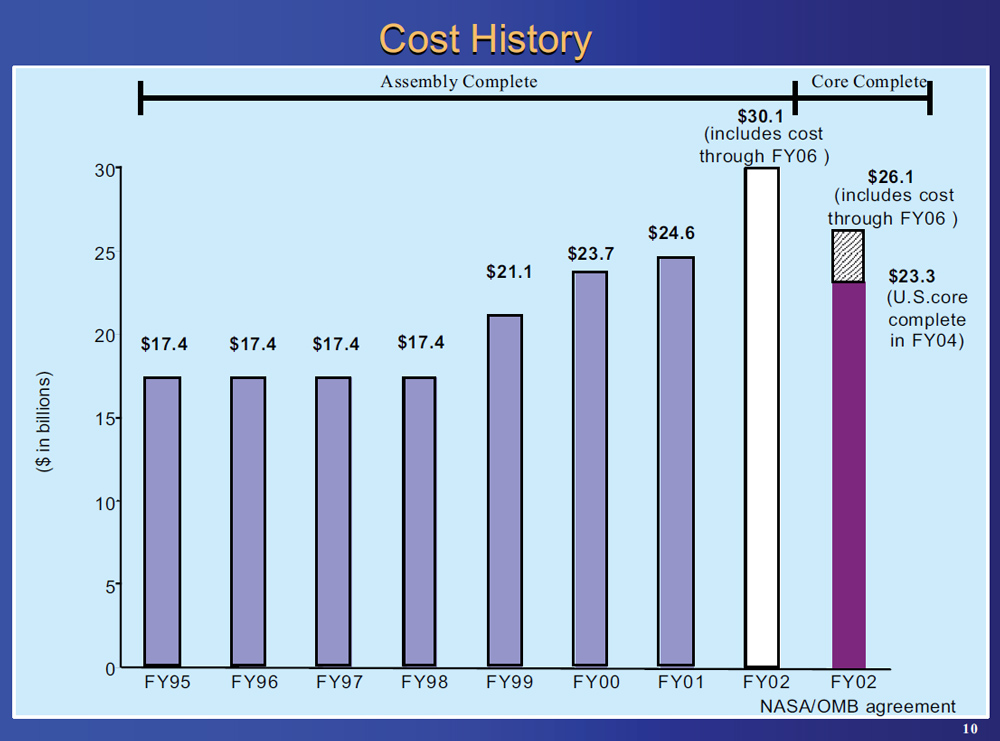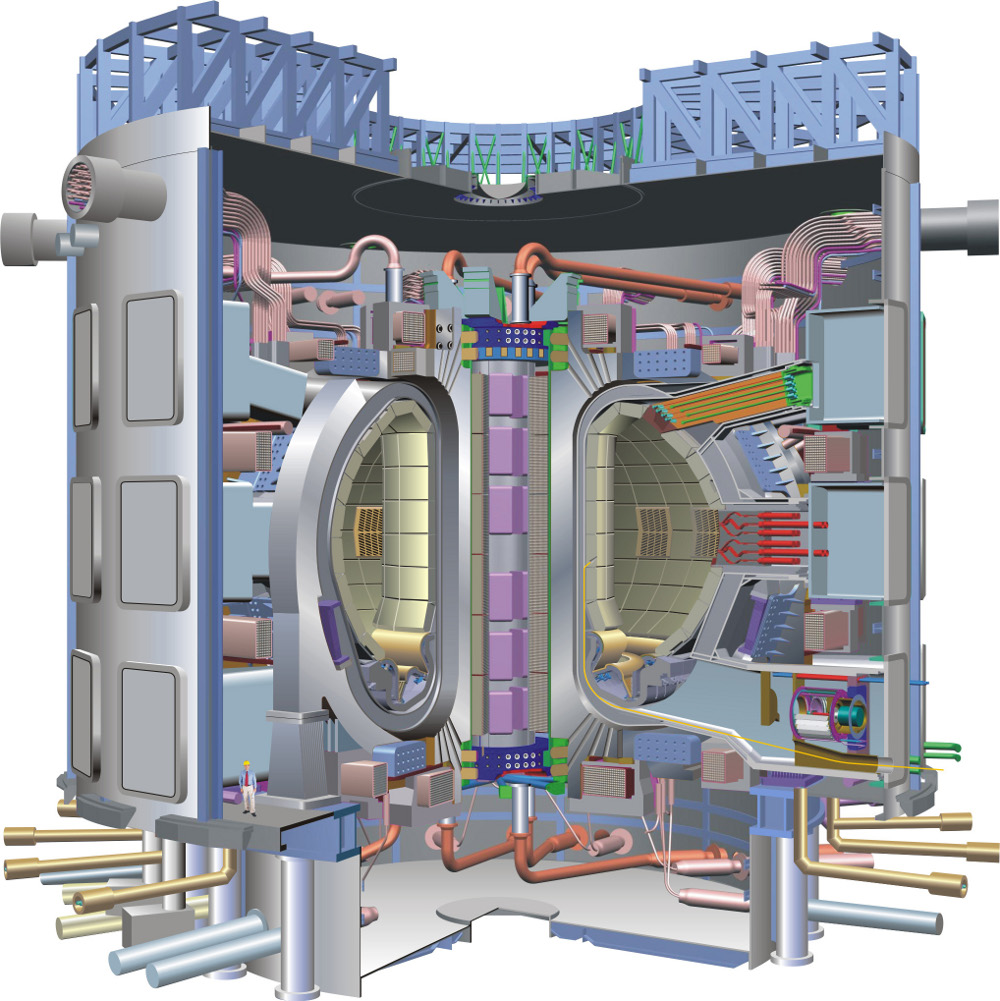Director's Corner
6 May 2010
 Barry Barish |
Cost and cost growth in science megaprojects
Many of the most important science questions facing us in the 21st century require developing very large facilities. Certainly, small-scale science is very much alive and innovative single-investigator research continues to produce many important discoveries. But, the trend towards larger science seems inevitable and we scientists need to make sure such facilities are done cost effectively, if we expect society to support us. This means we must very carefully choose which projects to develop, so that we will produce the best science. But we also must keep the scope of our projects so that they are affordable, and we must execute the projects in a manner that will contain cost growth. So far, the record is not very good.
 The documented early cost history of the International Space Station. The documented early cost history of the International Space Station. |
 The International Thermonuclear Experimental Reactor being built in Cadarache, France The International Thermonuclear Experimental Reactor being built in Cadarache, France |
Cost growth has been a very common problem for large science projects. For example, the largest such project, the International Space Station, experienced dramatic cost growth throughout the construction, beginning with documented doubling of the construction cost and followed by continuing cost escalation. The reasons are manyfold, but some of them present important lessons for us, like cost growth due to an evolving design, lack of sufficient mechanisms to control cost growth, etc.
Closer to home, the Large Hadron Collider (LHC) also experienced both cost growth and subsequent delays in schedule. The project was originally approved in 1995 for a budget of 2.6 billion Swiss Francs, plus 210 million Swiss Francs for the experiments. The project underwent a major review in 2001, resulting in an increased budget and a delay in the start date from 2005 to 2007. By the time of actual commissioning in 2010, the costs had grown well beyond the original budgets. Problems with magnets were a major contributor, but underestimating the costs when the project was proposed and approved was also a big factor.
The most current large project, and one that the ILC is often compared with is the International Thermonuclear Experimental Reactor, ITER, which has already experienced large cost growth that is slowing the project, causing a reduction in scope, management issues and more problems that are generally jeopardising the project. An editorial in Nature from June 2008 summarised the situation, “ITER will cost more to build than previously thought. Now is the time to be honest about how much.”
The Nature editorial went on to state correctly the problems (and ones not unique to ITER!) in costing such large projects, “Quoting a price for a major new scientific instrument is notoriously tricky. Researchers have to estimate costs for equipment that has never been built, forecast expenditures years in advance, allow for unknown contingencies, and win approval from sceptical politicians who always want the project to cost less. So it is not a complete surprise that a recently finished design review of ITER, a major fusion experiment to be built in Cadarache, France, is forecasting a delay of 1-3 years in its completion date and a roughly 25-30% increase in its 5-billion (US$7.8-billion) construction cost.”
If we want a linear collider in our future, we must learn from this history and do all we can to provide realistic costing from the beginning and then to be firmly committed to containing cost growth at each step as we move forward. Next week, I will describe what we are doing to try to achieve this goal for the ILC, while at the same time maintaining our firm commitment to the science capabilities.
-- Barry Barish